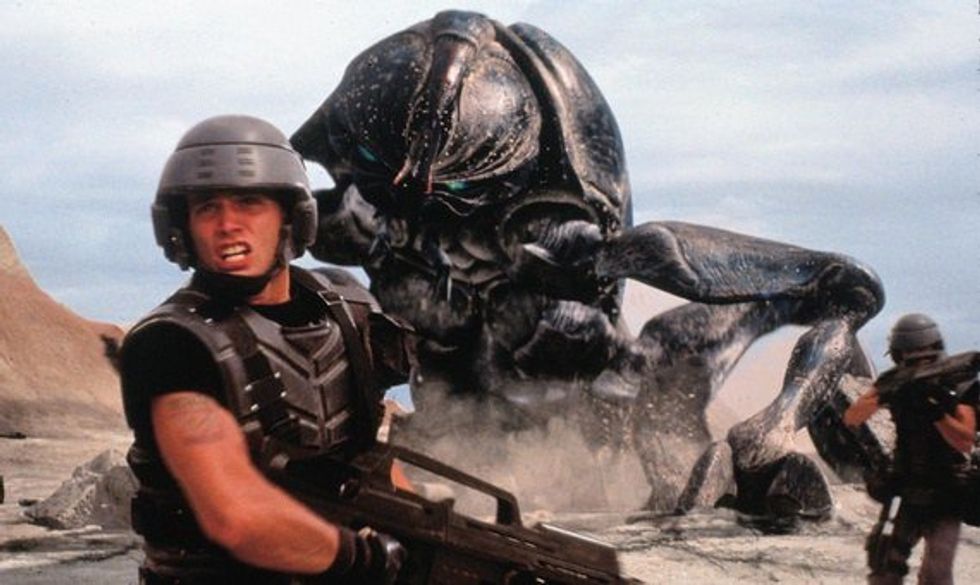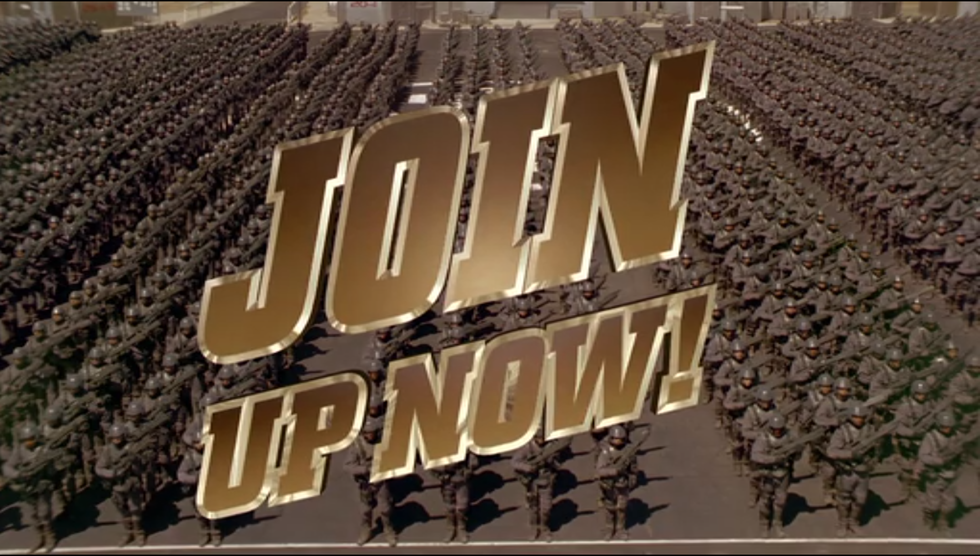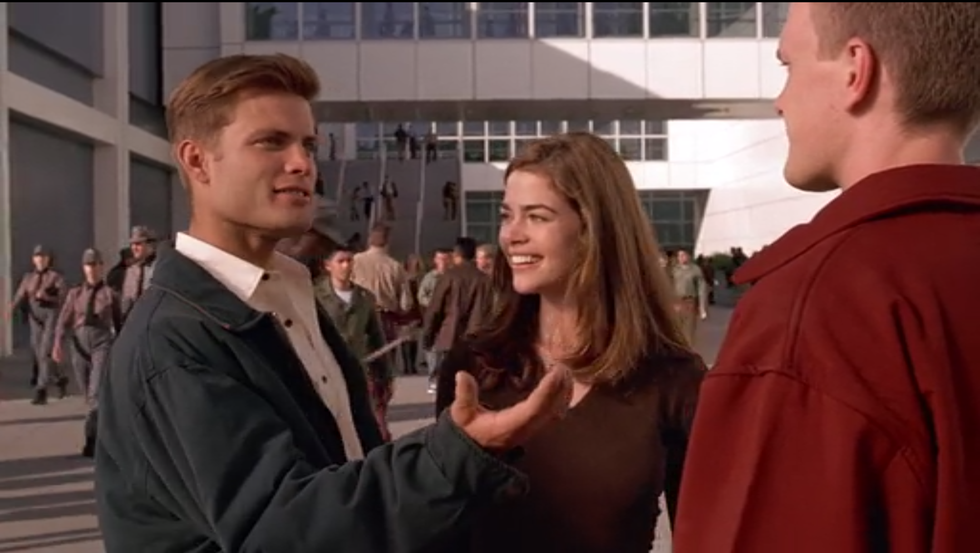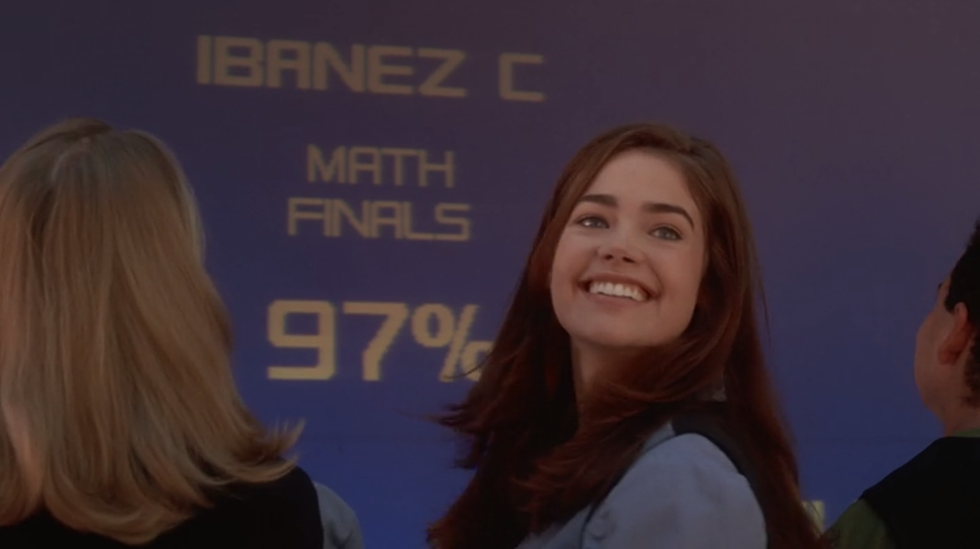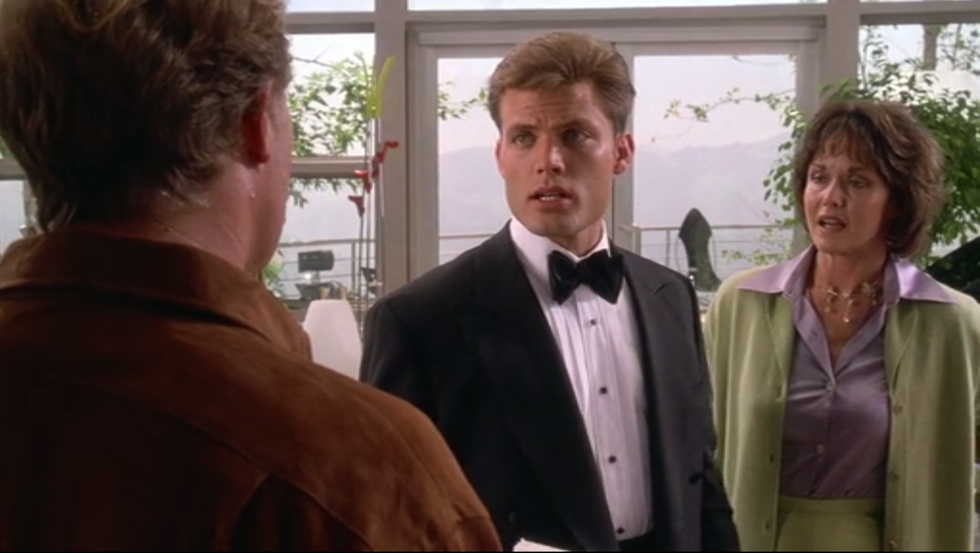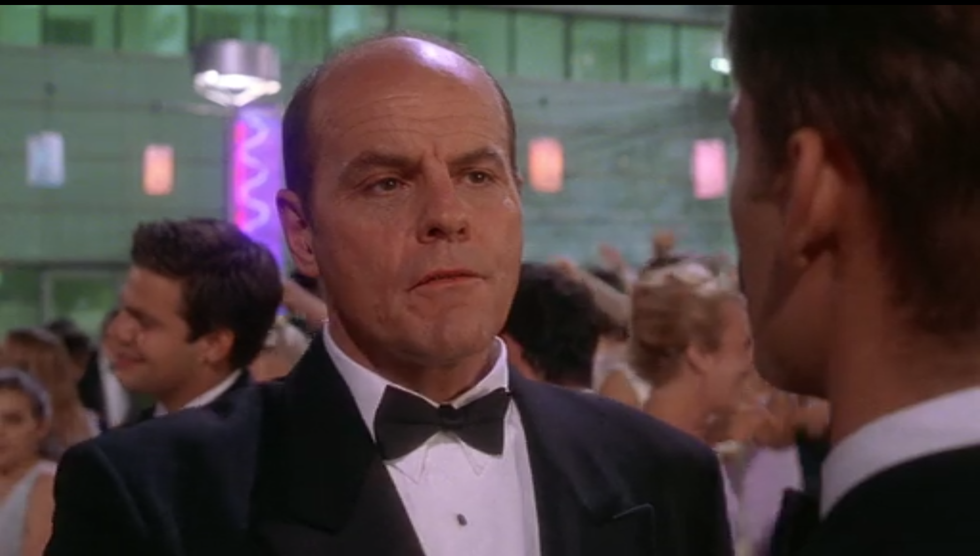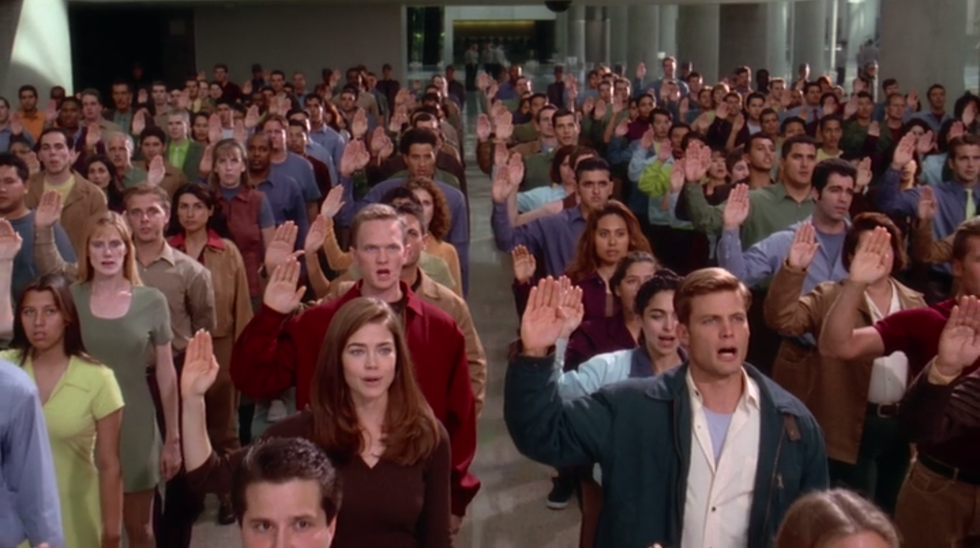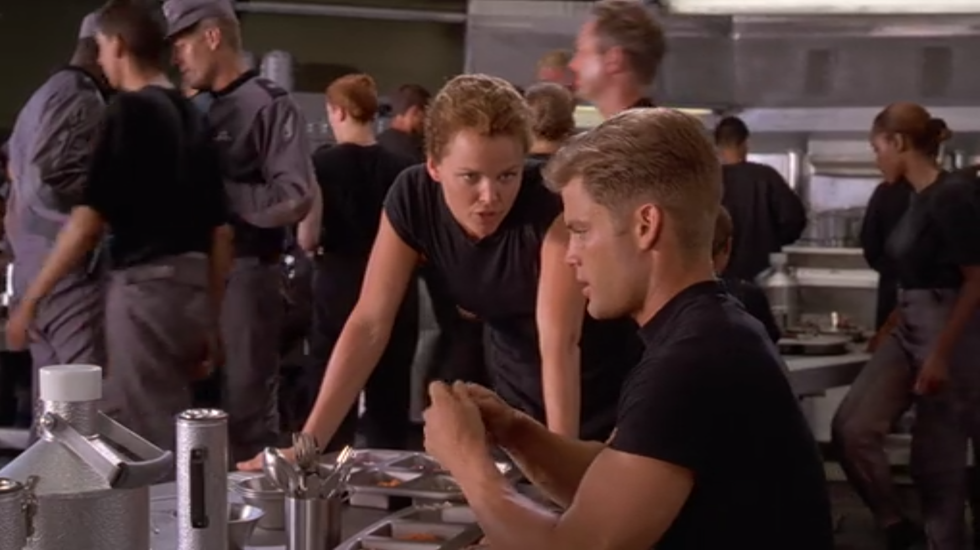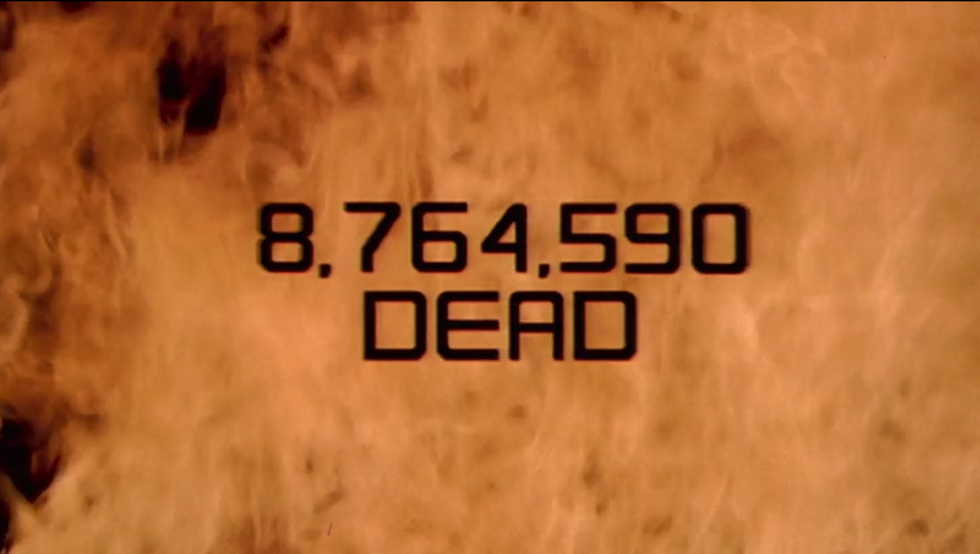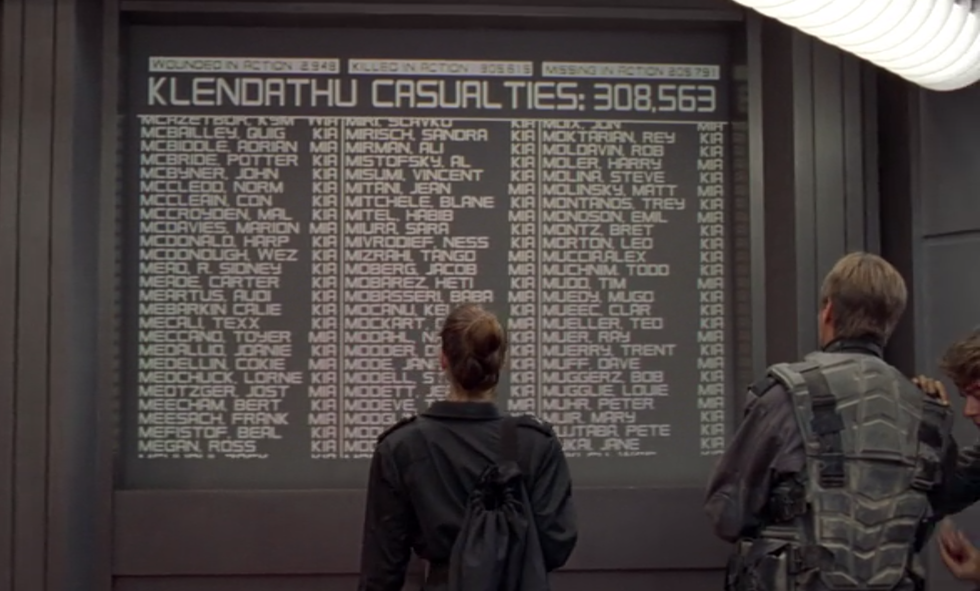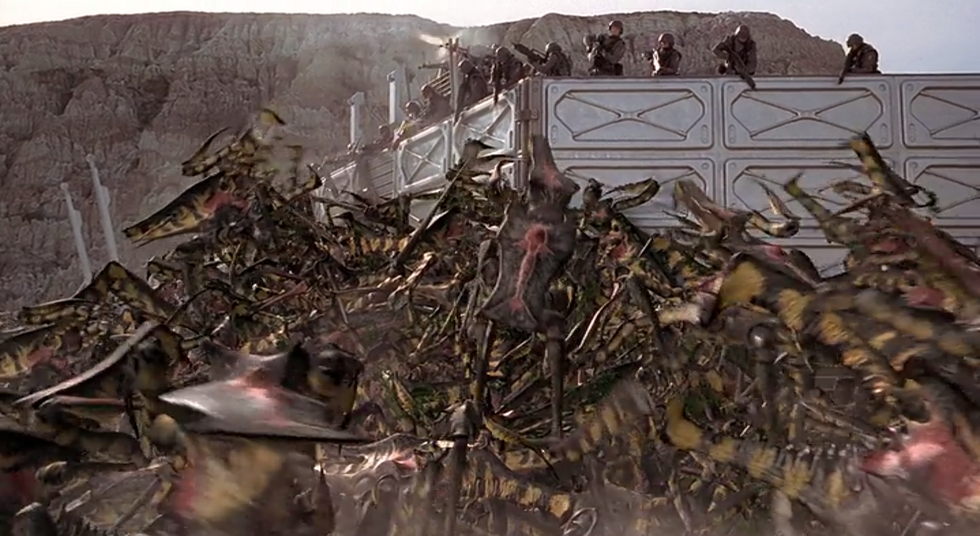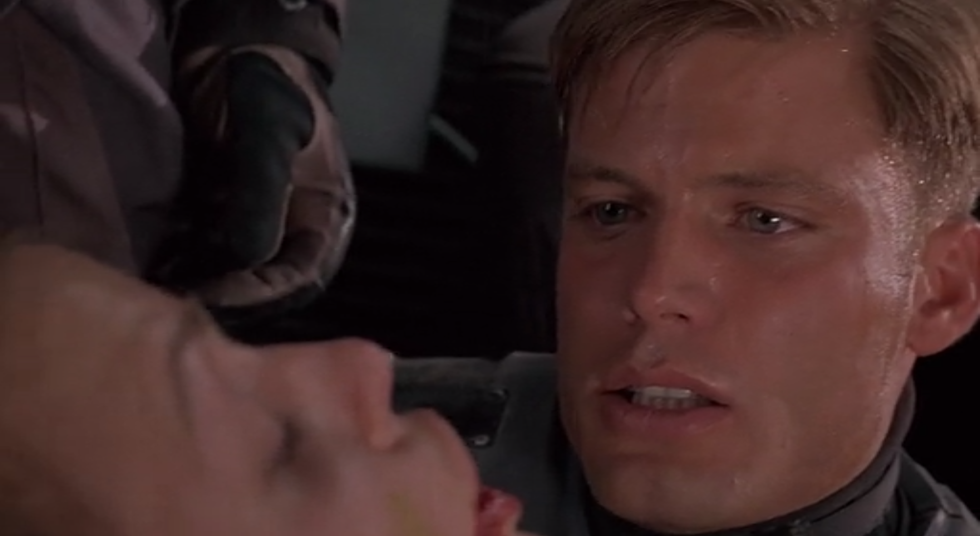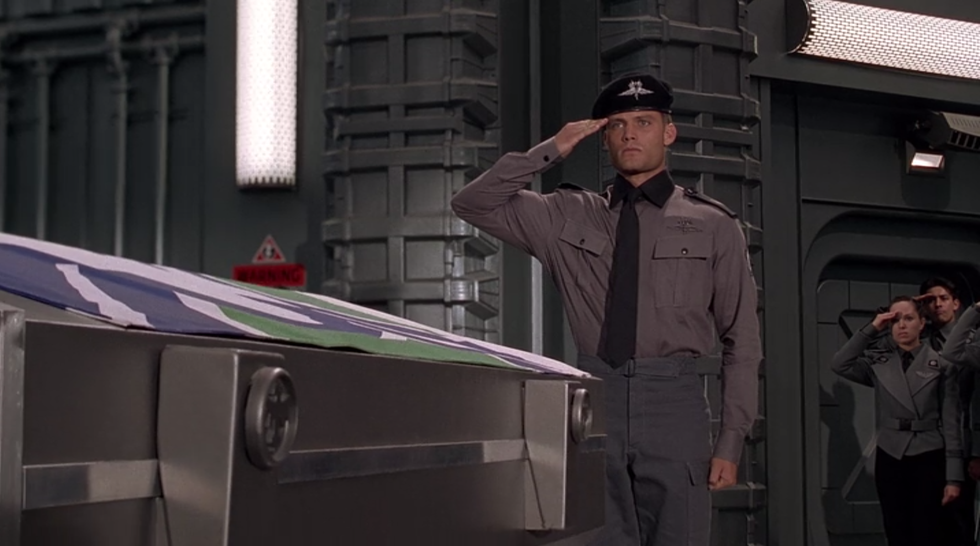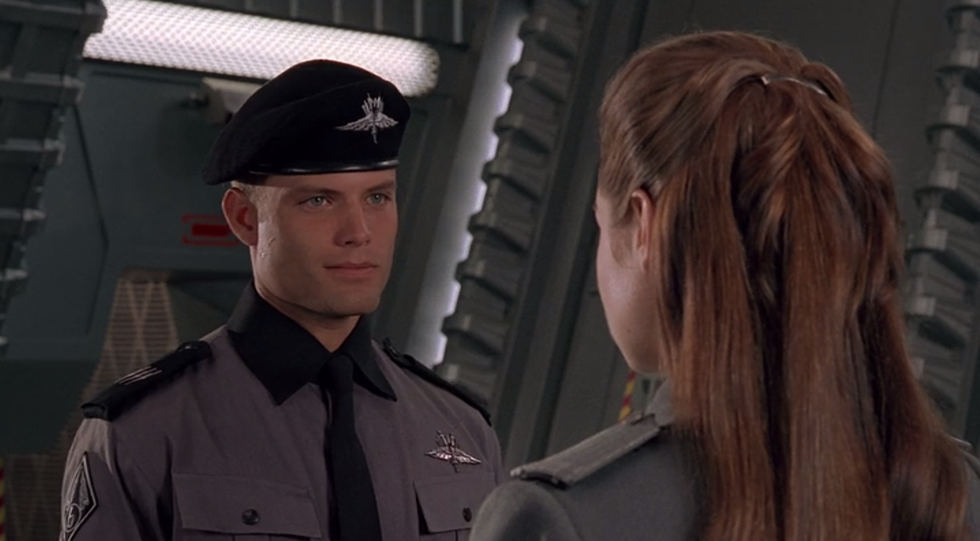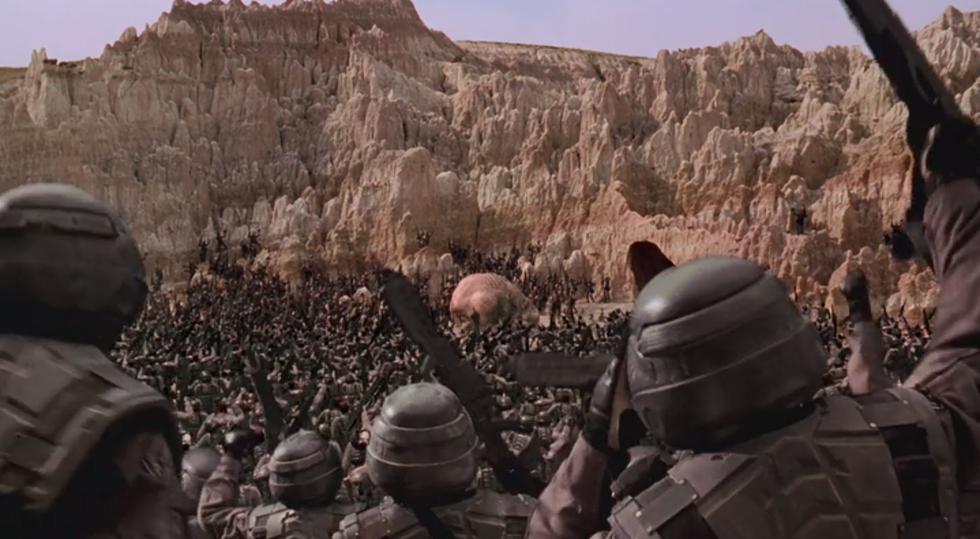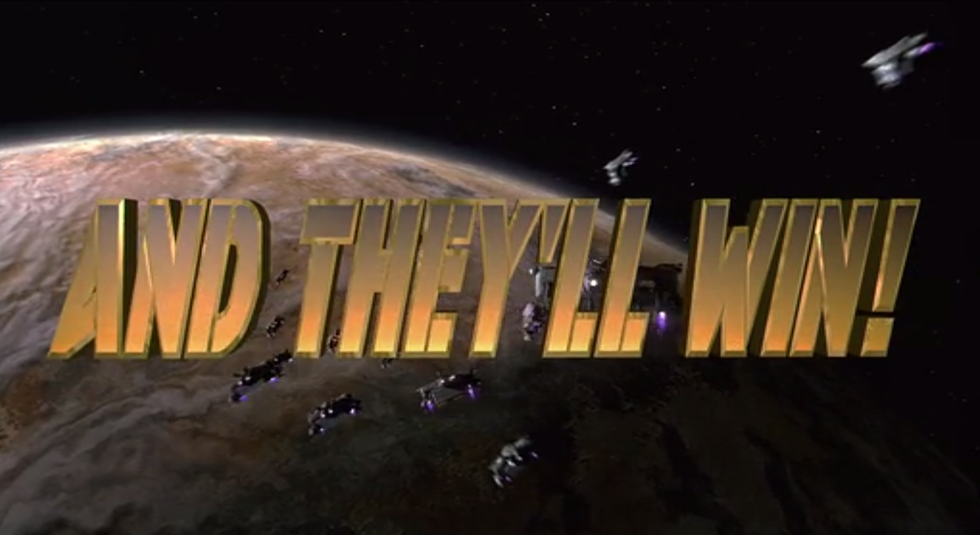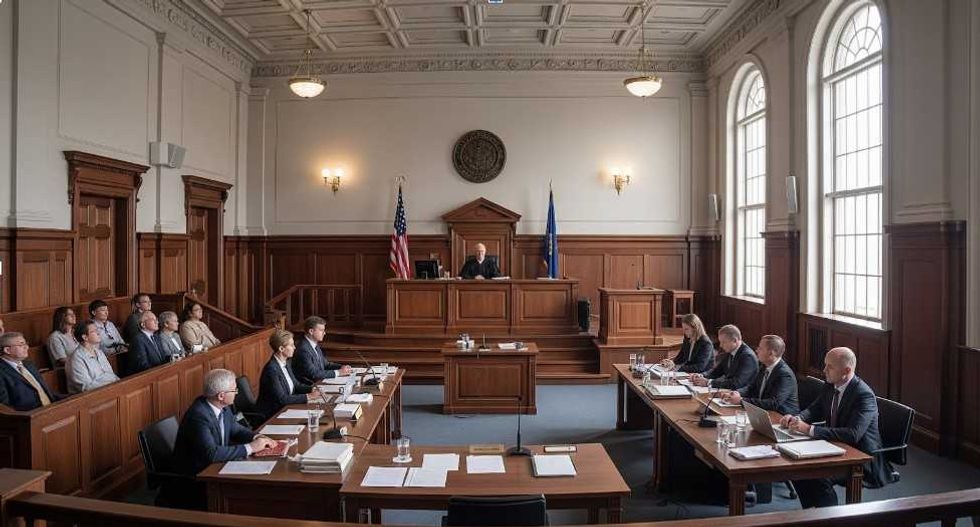Last week, I did a breakdown and analysis of "Princess Mononoke." This week, I will do the same for "Starship Troopers," a satirical science-fiction action film released in 1997. By taking this incredibly misunderstood story, disassembling it, and then inserting it into the mold of screenwriter Blake Snyder's '15 Beats,' a notable approach to writing a structurally sound screenplay, one can both learn about and appreciate just how decisive the story's major plot points are. As I will be discussing crucial parts of this film from start to finish, this article is not spoiler free. Continue reading at your own risk.
Act I
1. Opening Image
The first visual that is shown on screen, the opening image sets the visual and emotional tones of the story.
Technically the second shot, this image follows a quick shot of a commercial bumper that reads "Federal Network." Accompanied with an upbeat musical fanfare and the phrase "Join up now!" written in a bold golden font, the audience immediately knows that they are watching a patriotic military recruitment advertisement, which plays a huge role in this Fascist-Utopian film.
2. Set Up
Establishes the protagonist, presents the world that they live in, and also hints at what might be missing in their life.
3. The Catalyst
The precise moment where the story takes a drastic turn, the protagonist is now no longer able to go backward, only forward.
Carmen, who aims to study at Fleet Academy to become a military pilot, is happy to see that she has received an excellent grade on her math final. Because of her high score, it is incredibly likely that she will be accepted—which is bad news for Johnny, for the two of them will then be separated.
4. The Debate
In the aftermath of the catalyst, the debate is a crucial moment where the protagonist contemplates what to do and how to do it.
5. Theme Stated
A subtle declaration of the story's central theme, theme stated is often a line spoken to the protagonist as a form of foreshadowing.
Act II
6. Break Into Two
The story's protagonist makes a pivotal decision that pushes them and the story from the first act into the second act.
Believing that he has come to his own true decision, Johnny, along with Carmen and close friend Carl Jenkins, all enlist in the military together. Carmen is sorted into Fleet, Carl into Military Intelligence, and Johnny into Mobile Infantry.
7. B Story
A plot point dedicated to smoothing out the transition from act one to two, the B Story marks the beginning of a subplot where the theme of the movie is usually discussed between the protagonist and another character.
8. Promise of the Premise
Also known as "Fun and Games," the promise of the premise is a time of exploration, character development, and world-building.
After a wide variety of experiences, including the making of new friends, enduring a lifestyle very different than his previous one, and being promoted to squad leader while at boot camp, everything accumulates to the premise the audience has been promised: humankind going to war with the Arachnids. After an enemy attack decimates the city of Buenos Aires, killing Johnny's parents along with over eight million others, both characters and audiences alike are raring for a counterattack.
9. Midpoint
Rather self-explanatory, the midpoint marks a dramatic shift in the second act, and depending on the film, includes a false defeat or false victory.
Humankind and the Mobile Infantry are dealt a crushing defeat in the first battle against the Arachnids. With over 300,000 casualties, this moment is seen as a defeat, but it is a false defeat since Johnny survives the battle, and the military begins to form a new and different plan of attack.
10. Bad Guys Close In
A representation of mounting opposition against the protagonist, it also symbolizes a rise in tension as the story heads towards the end of the second act.
Sent back into action to wipe out pockets of enemy resistance, Johnny and his group are lured into a trap and ambushed by a massive wave of Arachnids.
11. All Is Lost
The protagonist here suffers a crushing defeat, the opposite of either the false victory or false victory they achieved at the midpoint.
Although Johnny and a handful of other soldiers are rescued from being slaughtered, it is a false victory. Dizzy, whom he had developed romantic feelings for, and Jean, whom he admired and looked up to, were both tragically killed in the battle.
12. Dark Night Of The Soul
The protagonist sinks to the lowest point possible. Everything they have gained or fought for is now meaningless.
With his mentor and lover dead, Johnny sinks to his lowest point. It seems that there is no victory in sight in the war against the Arachnids.
Act III
13. Break Into Three
With nothing else to lose, the protagonist suddenly gains a surge of determination, giving them the strength to push the story into act three.
When Johnny is told by Carl, now a Colonel in Military Intelligence, that the capture of an Arachnid rumored to be highly intelligent could help change the course of the war for the better, he is motivated to continue fighting.
14. Finale
Pooling together everything they have experienced and learned throughout their journey, the protagonist finally achieves victory.
In a courageous display of bravery and selflessness, Johnny saves Carmen from being killed and facilitates the capture of the Brain Bug, the highly intelligent Arachnid that Military Intelligence was after.
15. Final Image
The last visual before the credits, the final image is different than the opening in order to signal dramatic change has occurred.
"Starship Troopers" ends with another military recruitment advertisement by the Federal Network, this time saying "And they'll win!" after a confident motivational speech on how humankind will triumph over the Arachnids. This drives home the message of how easily people can be seduced into putting their lives in incredible danger in exchange for what they perceive to be honor, glory, and "citizenship."
A masterpiece of both sci-fi action and satire that was unfortunately not as appreciated as much as it should have upon its release, "Starship Troopers" can be purchased as a DVD or Blu-Ray on Amazon, or viewed on Netflix.



